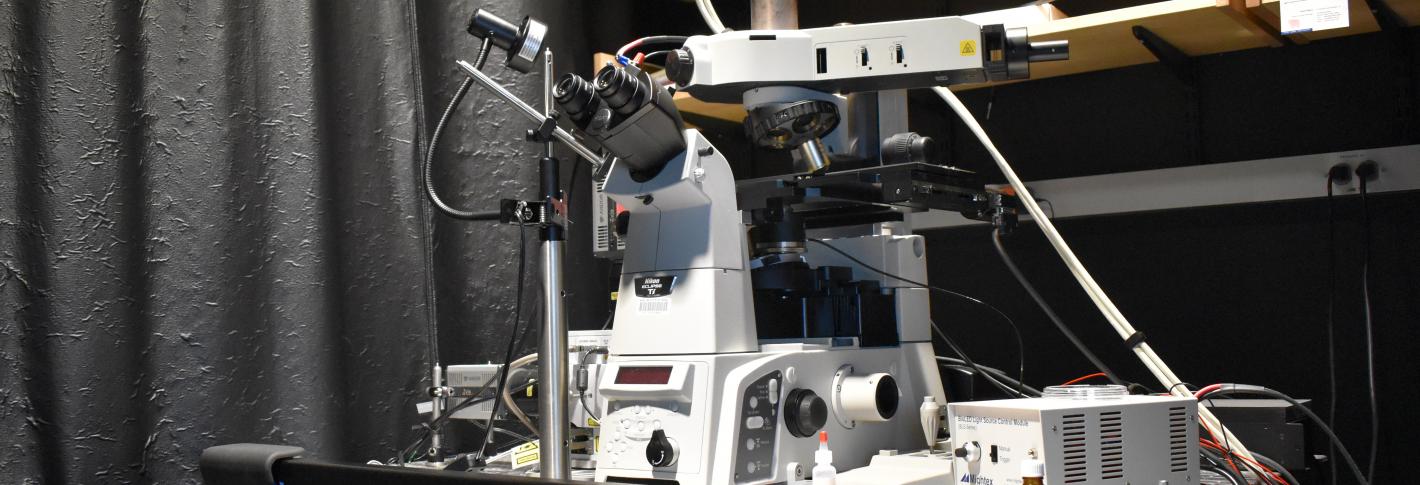
A formidable challenge of studying neural correlates of behavior is that natural behaviors, especially in animal models, typically involve movement. Tracking the activity in virtually every neuron in a moving, behaving animal, even a very simple one like the 302-neuron C. elegans worm, has proven very tricky, but the lab of Steve Flavell at MIT’s Picower Institute for Learning and Memory has developed a method of doing so.
The system involves many innovative hardware and software modifications to a spinning-disk confocal microscope. While the scope uses one light path to image each neuron (typically identified with a conventional stain) and its activity (typically indicated by flashes triggered by surges of calcium in the cell), the addition of a second light path records the animal’s behavior and drives a closed-loop system with a motorized microscope stage to keep the animal’s head centered in view. The tracking system is driven by a novel animal tracking algorithm that anticipates the movement of an animal based on its recent history.
Meanwhile, several other innovations allow the first light path to isolate and image virtually every individual neuron in the worm’s brain. One is a custom software pipeline, running on a high-performance computing cluster that finely registers the whole 3D volume of the worm and the cells within. Another is a high-stiffness objective piezo that settles rapidly at defined z planes (different focal heights within the worm from top to bottom) and triggers a fast pulse of laser light to collect each slice of a z-stack rapidly (1-2ms) after the objective settles, to minimize blur.
The team uses the system in a variety of studies. In November 2021, Flavell's lab published a paper in eLife highlighting an elegant circuit that integrates multiple sources of sensory information to endow worms with the flexibility to switch between long-lasting behavioral states: dwelling to feast on food or foraging to find it. With a recent grant the lab is also working to rigorously track how serotonin release and reception in networks of neurons in the worm affect behavior.

